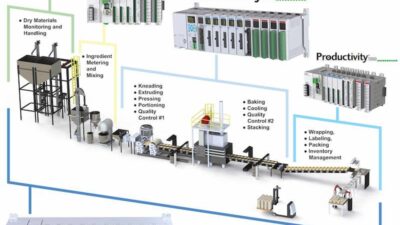The IndustryWeek M&T Conference & Expo highlighted manufacturing technology strategies and trends such as implementing programs to collect and analyze data for predictive maintenance.

The IndustryWeek Manufacturing & Technology Conference & Expo sponsored by MESA International was hosted at the Donald E. Stephens Convention Center in Rosemont, Ill., on May 3-5. The conference included many education sessions and keynotes on how businesses are meeting business challenges by implementing new strategies involving the Internet of Things (IoT), smart manufacturing, and collecting analytics to improve manufacturing operations. One of these strategies was an education session regarding the impact of analytics on asset reliability and process quality by David Reiber, business solutions architect at Perficient; Dan Bigos, industry manager at IBM; and Pedro Mendez Torrez, program manager at Abbvie Engineering.
Applying predictive analytics
Although industries that are asset-driven have been connecting to dashboards for quite some time, Internet of Things (IoT) has revolutionized how this is done on various levels to provide meaningful insights that help improve operations, production, warranty, maintenance, and quality control.
Analytics can help provide insights and be applied to several areas within the manufacturing industry by answering questions in many areas within manufacturing such as:
- Maintenance—when and why will the equipment fail?
- Quality—are processes and products meeting quality standards?
- Warranty—what are the reasons for accelerated wear and replacement?
"One of the benefits is the wealth of information that is available and the ability to bring all that in, and apply analytics to that," said Reiber.
There are many reasons why the manufacturing industry should be applying analytics to manufacturing processes.
"Failures happen in sporadic and catastrophic events that can skew data so understanding how to sort that data is critical. Now that we have these tools, it’s changed everything," said Reiber.
Applying analytics to your manufacturing practice means:
- An increasingly instrumented environment
- Wireless communications and mobility
- Ability to manage data volume and variety
- Industry- and asset- specific analytic capabilities
- Cost-effective and quick analytics implementation via the cloud
- Significantly enhancing current manufacturing practices.
Benefits of predictive/preventative maintenance
Reiber said that you need to take the time to identify failing assets early by monitoring certain conditions. Collecting early diagnostics with analytics is critical for operations. "You can’t do strategic analysis of data that you didn’t gather," said Reiber.
There are many benefits to implementing predictive maintenance to your organization:
- Reduce maintenance costs
- Reduce unexpected failures
- Repair and overhaul time
- Increase spare parts inventory
- Reduce cost of unplanned downtime
- Increase asset life
- Reduce equipment downtime.
By understanding the asset’s health or status, scheduled maintenance can take place instead of unexpected events that result in extended downtime and increased costs. By analyzing data for each asset, you can implement various maintenance strategies for each asset based on factors such as failure information, history, and expectations of failure. Initiating, automating, and analyzing data earlier in order to identify problem areas earlier on streamline the overall manufacturing process by being more proactive in regards to asset maintenance. "I’m always looking for a tool that does the analytics, structured or unstructured, to get the data analyzed and aggregated fast. They’ve put that in the toolbox," said Reiber.
Monitoring dashboards for asset health in real-time enables inspectors to address the warning signals before something catastrophic occurs later on. Employing predictive analytics also helps avoid unnecessary asset maintenance.
"We can now trigger conditions to plan effectively and better set up production schedules if they are being reactive," said Mendez.
Prior to this technology, this type of predictive maintenance wasn’t possible because the smart assets weren’t available. Everything was either hardwired or standalone, and the costs of installation was too high, said Mendez. Now, the smart technology is available for organizations to gain a lot of value from implementing predictive analytics programs and tracking asset health to prevent asset failures. The key is to identify the problem before there is a larger one that results in production coming to a grinding halt. Initiating a predictive maintenance program will result in more efficient operations with less downtime overall by minimizing the risk of unexpected asset failures.
Emily Guenther, associate content manager, CFE Media, Control Engineering, [email protected].
ONLINE extra
MESA is a CFE Media content partner. See related articles below.


